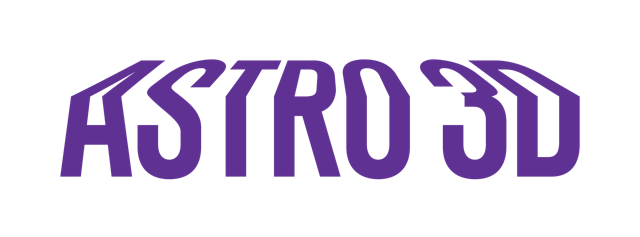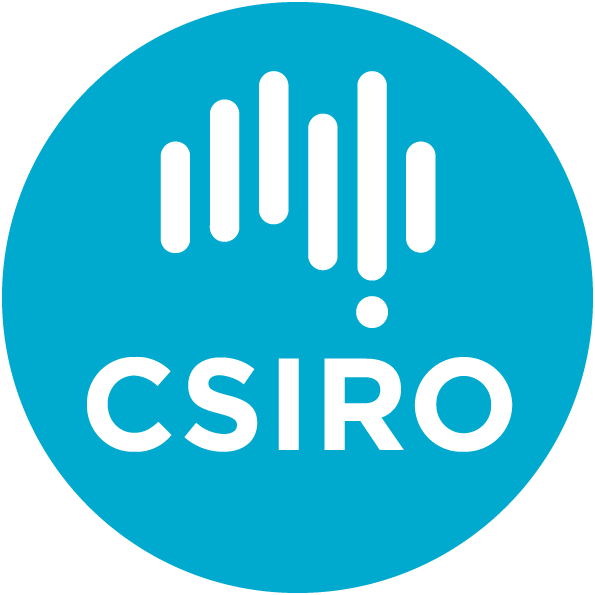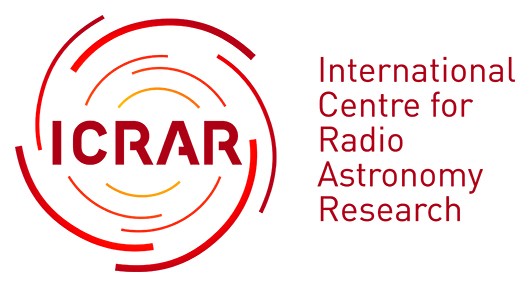August 2023
Editor: Manasvee Saraf
Foreword
MANASVEE SARAF
Welcome to the August 2023 edition of the WALLABY newsletter! The past six months have been a whirlwind of activity for the WALLABY team, marked by an eventful conference season with a stream of publications, the processing of full survey observations for internal team release, the development of an innovative kinematics pipeline, and the preparations for the second public data release!
In this issue, the PIs encourage us to attend WALLABY science meetings and upcoming science conferences. The project manager and the project scientist provide updates on the full survey, address solar interferences, and highlight recent WALLABY-based publications. We are thrilled to welcome seven new members who joined us since February 2023. Marcin Glowacki shares exciting news about the first fast radio burst detection in a WALLABY field, while Kristine Spekkens extends congratulations to her students Alex, Rebecca, and Reanna on the completion of their WALLABY-based MSc theses. The Technical Working Groups (TWG) 4, 5, and 7 present significant technical updates.
I hope you enjoy reading about the latest developments and achievements within WALLABY. Happy reading!
Message from the PIs
LISTER STAVELEY-SMITH & BARBARA CATINELLA
With WALLABY observations in full swing, it’s been an exciting six months since the last Newsletter! While issues with solar interference have slowed down our progress, as described below, we continue to collect valuable data, and preliminary source extraction products (single footprints) are being made available to the team.
We welcome several new members to the WALLABY team and look forward to collaborating with them on HI-related science. We would like to remind everybody that the best way to engage with WALLABY science early on is to attend our monthly (virtual) science meetings, where ongoing WALLABY work is presented and discussed in a very informal setting. Also remember to check our #science-discussion Slack channel, where teaser plots are posted in advance of these meetings. WALLABY science meetings are held on the third Thursday of each month, alternating between European and North/South American friendly times, and will resume in September, after a 2-month break to avoid clash with conferences. Please contact Barbara if you would like to present at a future science meeting.
Speaking of conferences, WALLABY results have been presented in various forums, including the PHISCC meeting in Cape Town, the ASTRO 3D Annual Science Meeting, the Annual Scientific Meeting of the Astronomical Society of Australia (ASA), and the ACAMAR Gas in Galaxies conference recently held in Perth. If you have WALLABY results to present, please explore this list of upcoming conferences and meetings coming up later this year.
Message from the Project Manager
TOBIAS WESTMEIER & BI-QING FOR
Full WALLABY survey observations recommenced in May 2023, and more than 30 survey footprints have since been observed with the Australian SKA Pathfinder (ASKAP). Unfortunately, as the Sun is becoming more active again, we are also experiencing an increase in the number of observations that are adversely affected by solar interference and need to be rejected due to the presence of severe artefacts. This issue is affecting not just WALLABY, but also many of the other ASKAP survey science projects. As the radio flux from the Sun is expected to further increase over the next two years (see Fig. 1), several potential mitigation strategies are currently being discussed and tested.

Meanwhile, the WALLABY team continues to be scientifically productive. Seven peer-reviewed journal papers from the team based on pre-pilot or pilot data have already appeared in press or accepted for publication since the start of this year, with several more currently in preparation or under peer-review. One of the science highlights was a recent paper led by Marcin Glowacki (ICRAR/Curtin) on the atomic hydrogen (HI) detection of a fast radio burst host galaxy in WALLABY pilot data. This paper was the subject of a media release on 25 May and is also covered in this issue of the newsletter.
Message from the Project Scientist
KAREN LEE-WADDELL
Observations for the full WALLABY survey continue to fill up the disks. Fortunately, the ASKAPsoft processing pipeline is now fully running on Pawsey’s much faster Setonix system. While there are still a few processing bugs to be work out, a source of major concern for many of the Survey Science Teams remains our Sun. Yes, even though we are observing at radio wavelengths, solar interference poses a challenge. As detailed above, our ‘life-giving magnet in the sky’ is starting to become more active as it approaches solar maximum and there is a possibility that it may reach its peak sooner than expected.
Nonetheless, the WALLABY team remains dedicated to validating and releasing good quality “level 6” data on CASDA (under project code AS202) and providing preliminary source extraction data products for all WALLABY members through the AusSRC user portal. While the pace is slower than previously expected, ASKAP continues to produce valuable data and even more WALLABY science is certainly in the works!
New Member Profiles
Andrew Battisti
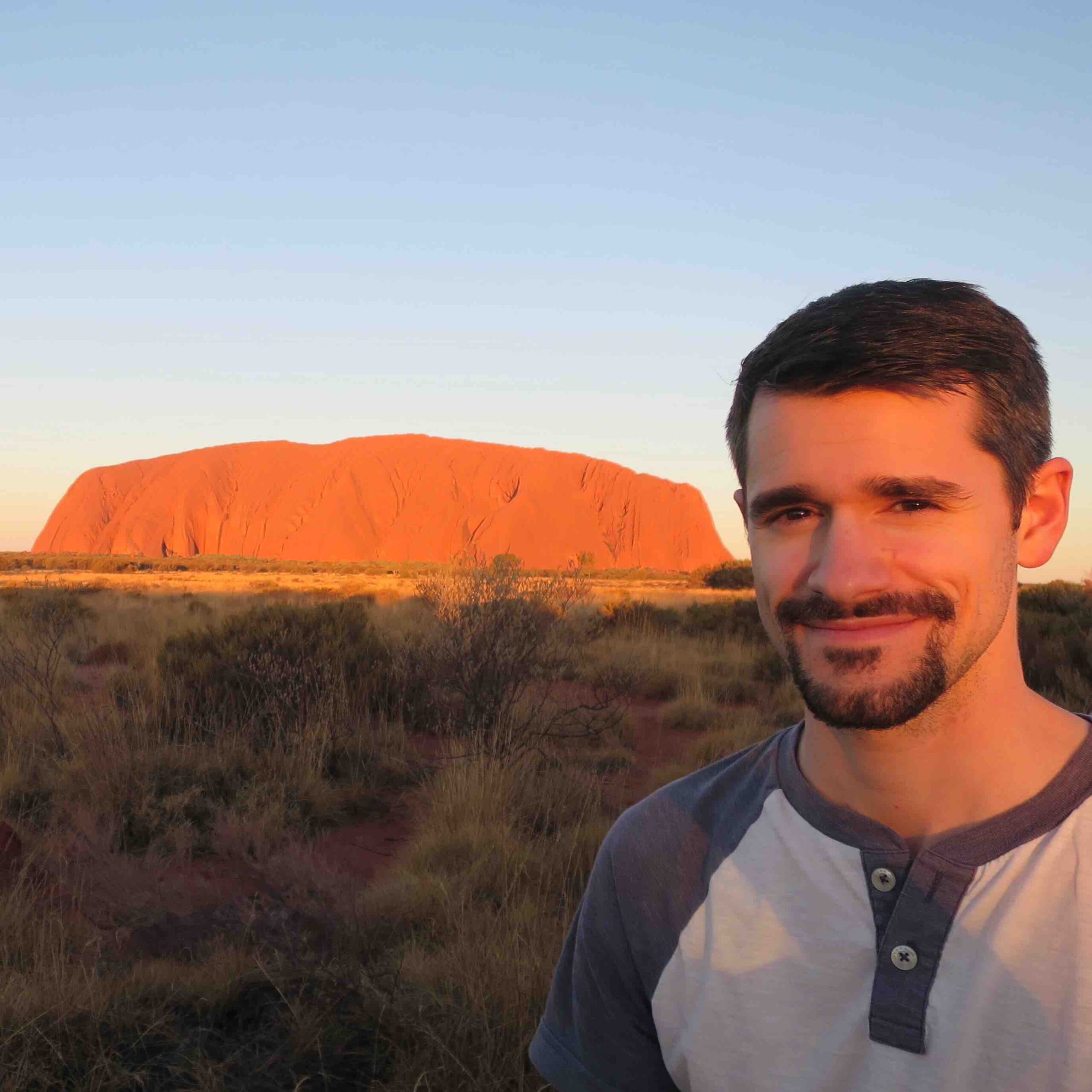
I am a Research Fellow at the Australian National University. I study the evolution of the interstellar medium (ISM) of galaxies, with a particular interest in interstellar dust and how it attenuates starlight. I study this by combining large optical spectroscopic surveys with multi-wavelength datasets. Recently, I have become interested in exploring the link between dust and gas in the ISM, which is why I am excited to join the WALLABY team!
I lead the emission line working group for TYPHOON. TYPHOON is an integral field spectroscopy (IFS) survey of 44 nearby galaxies, of large angular size, in the southern-sky. I plan to combine TYPHOON with WALLABY and other ancillary datasets to examine the link between all of the baryonic components of galaxies (stars, ionized gas, atomic gas, molecular gas, and dust). I am happy to facilitate access to TYPHOON data to the WALLABY team.
Duncan Forbes
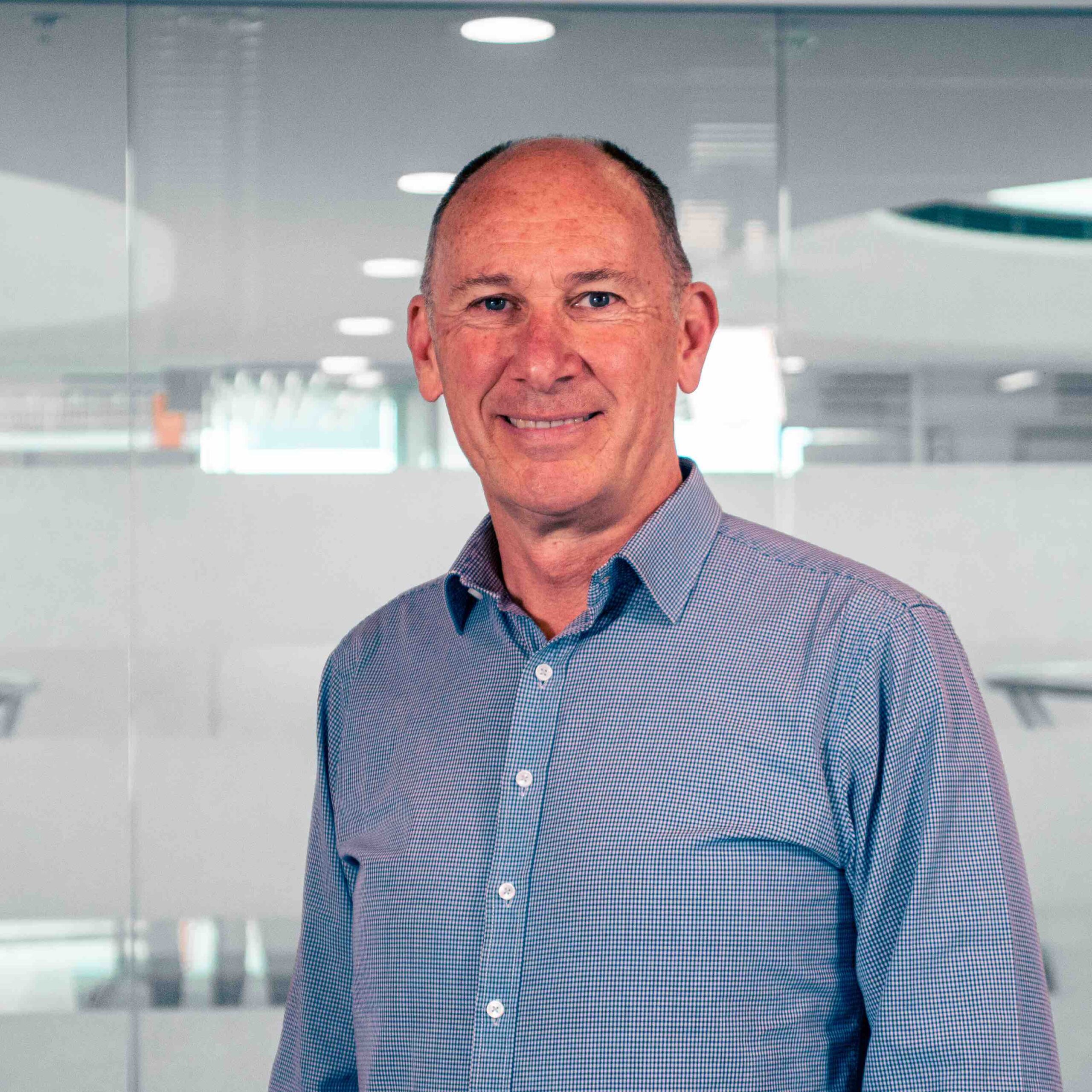
Duncan Forbes has been a faculty member at the Swinburne Centre for Astrophysics & Supercomputing since August 2000. A New Zealander, who did his PhD at Cambridge, Duncan has also spent time at the Space Telescope Science Institute, Lick Observatory in California and most recently as a Senior Lecturer at the University of Birmingham in England. Over the years, he has worked on various aspects of galaxy evolution with a fondness for globular clusters in external galaxies. His focus today is Ultra Diffuse Galaxies and how they might have formed.
Junhyun Baek
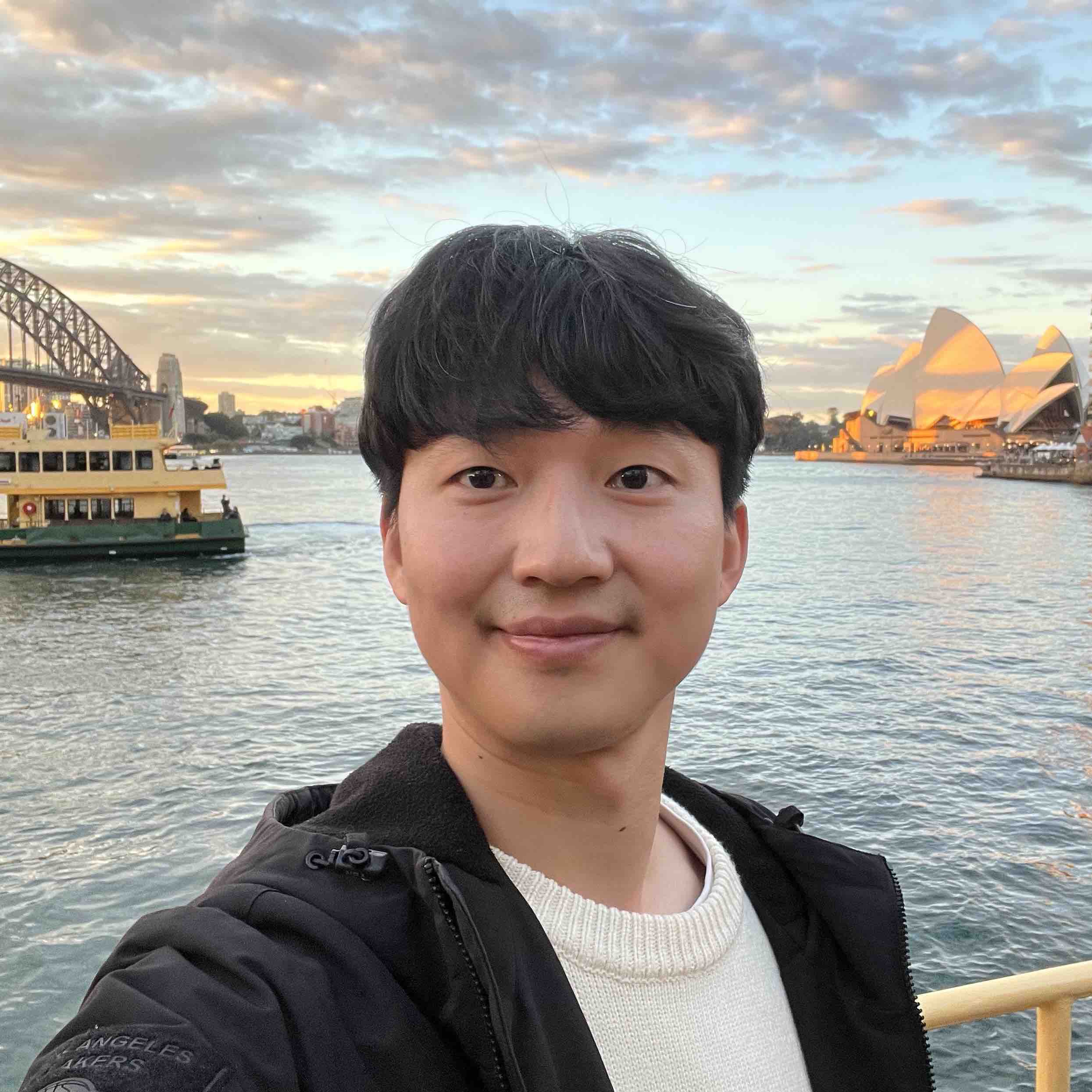
안녕하세요. I am a postdoc at Yonsei University, South Korea. I completed my Ph.D. in 2022 at the same institute under the supervision of Prof. Aeree Chung. I am working on gas-feeding and active galactic nuclei (AGN) feedback in a wide range of density environments, including cool-core clusters. For this, I have used various single-dish, array and very-long-baseline interferometry (VLBI) radio telescopes across the world to connect the AGN and their host environment on pc- to Mpc-scale.
My main interests in the WALLABY data are to study the role of the density environment of galaxies in feeding gas onto the central AGN and the impact of AGN activity on the evolution of host galaxies and clusters. I am looking forward to working with the WALLABY team and using the state-of-the-art data!
Marco Grossi

My name is Marco Grossi and I am an associate professor at the Observatório do Valongo, Universidade Federal do Rio de Janeiro. My research interests revolve around understanding dwarf galaxy evolution in diverse environments, using multi-wavelength observations spanning from the UV to radio frequencies. My particular focus lies in exploring the interstellar medium of dwarf galaxies to discern its relationship with star-formation activity and studying the influence of the environment of these dwarfs on their gas properties.
I am looking forward to using WALLABY data. This data will enable me to delve into the HI properties of low-mass systems situated in nearby low-density environments, facilitating a thorough investigation into the process of mass growth and the efficiency of gas-to-star conversion in isolated dwarf galaxies.
Pavel E. Mancera Piña
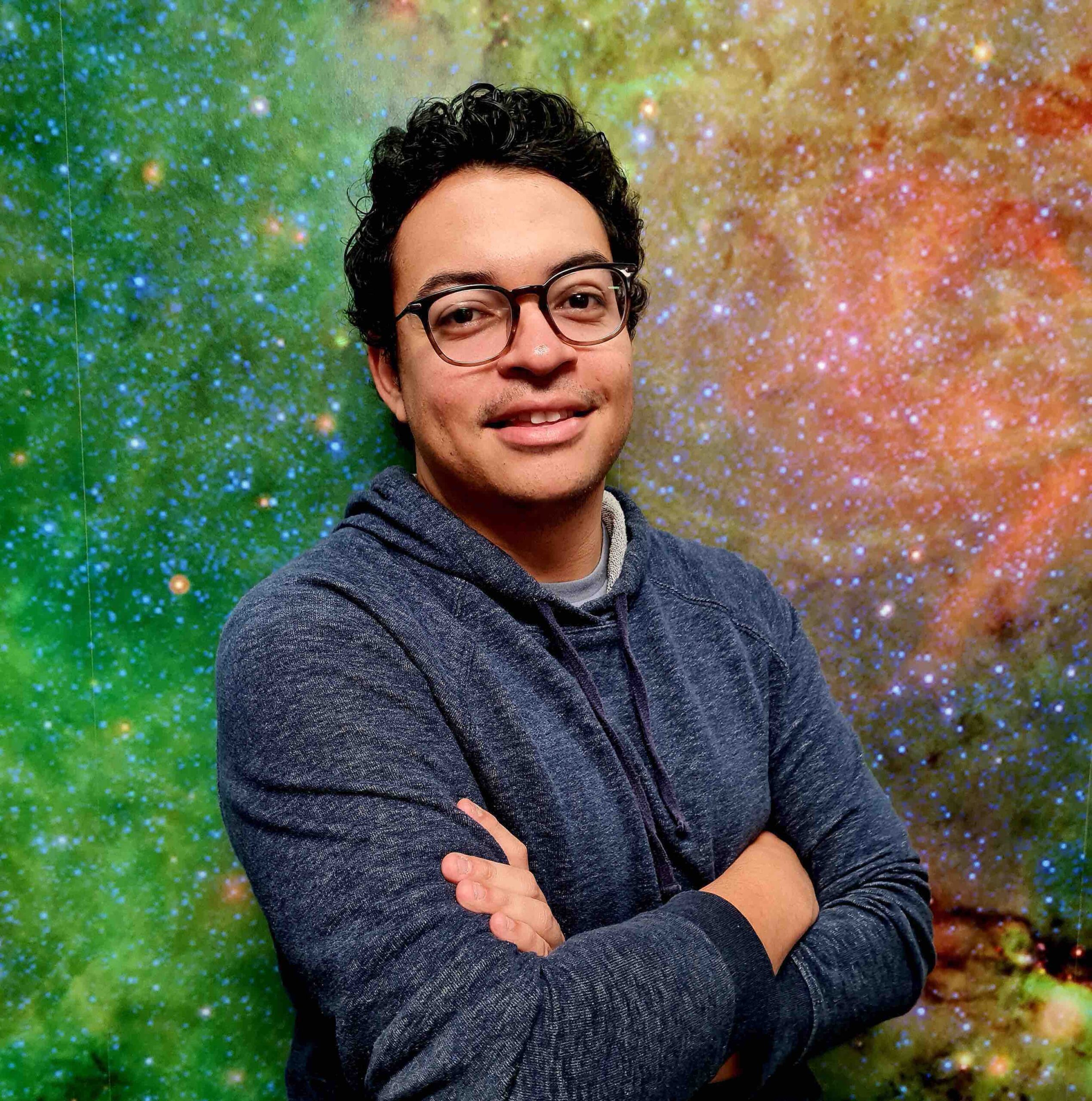
Hi all!
I am Pavel Mancera Piña, a postdoctoral fellow at Leiden Observatory. I study galaxy dynamics through cosmic time using the most advanced facilities (such as JWST, ALMA, VLA, and MeerKAT). Last year, I obtained my PhD from the University of Groningen. During my PhD, I studied the dark matter and angular momentum content of nearby disc galaxies, including the mysterious ultra-diffuse galaxies (which might pose a challenge to the cold dark matter model).
My expertise is the kinematic and dynamic modelling of galaxies and their dark matter haloes. In general, I have a broad interest in galaxy evolution, especially in the baryon cycle, the galaxy-halo connection, scaling relations, and the nature of dark matter.
Please do get in touch if you are interested in any of the above!
Seona Lee
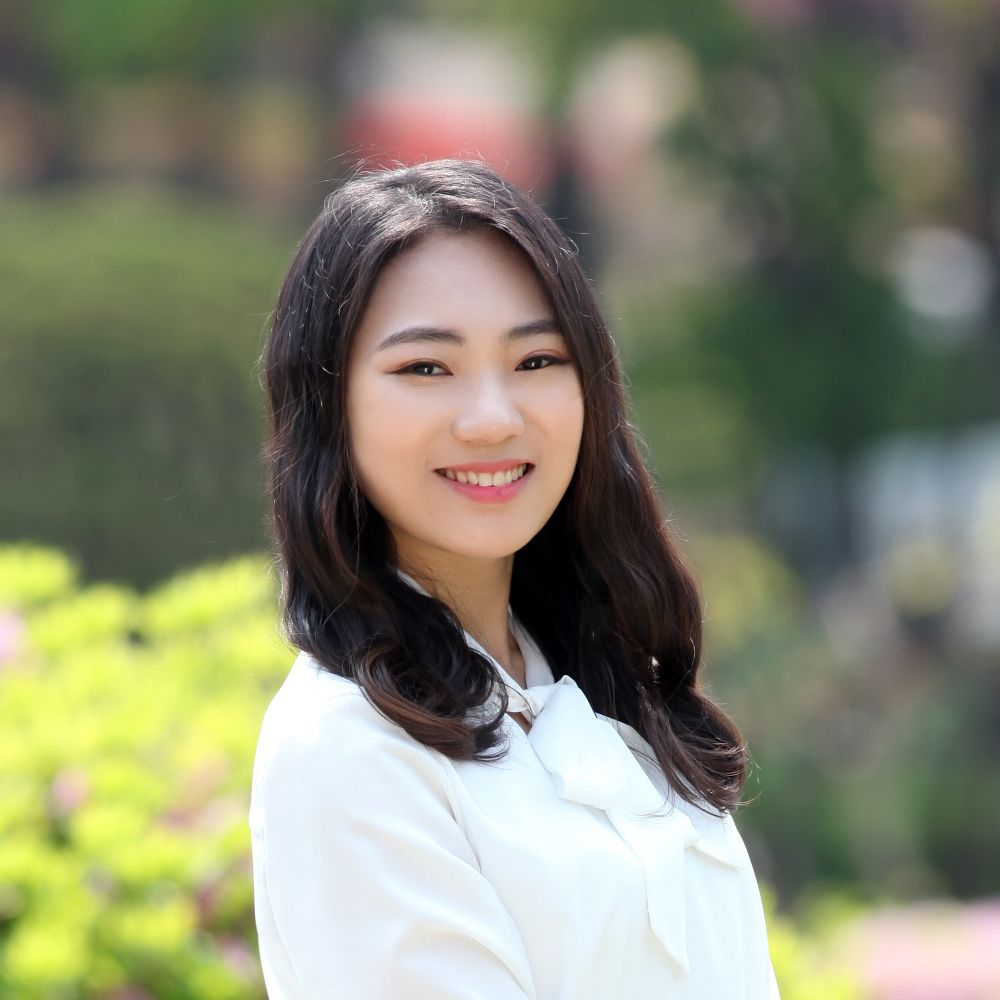
Hi I’m Seona. I’m a new Ph.D. student at ICRAR/UWA in Perth. My interest lies in the relationships between gas and stellar properties of galaxies in diverse environments. The HI properties of galaxies are the focal point of my research.
I’m currently studying the galaxies in the Hydra cluster. Eventually by utilising all available WALLABY data, I aim to conduct statistical studies to investigate samples of galaxies in various environments.
I’m very excited to join the WALLABY team and use WALLABY data for my science. I look forward to contributing to the team’s efforts.
Yago Ascasibar

Hi! My name is Yago. I am an associate professor at the Universidad Autónoma de Madrid (Spain), currently undertaking a long research visit to ICRAR/UWA (Australia). Starting from my Ph.D. thesis, just a couple of decades ago, mobility has always been a key element of my research career, not only geographical but also in terms of scientific interests.
My main motivation to be excited about joining the WALLABY collaboration is the unrivalled potential for constraining, in combination with observations at other wavelengths, the main physical mechanisms that are responsible for regulating the baryon cycle in galaxies. From a technical point of view, I would also be more than happy to take advantage of the opportunity to acquire some expertise in radio astronomy, and at present I am actively working on the problem of source detection.
The first fast radio burst in a WALLABY field
by Marcin Glowacki
During the Pilot Phase 2 observations of WALLABY, an exciting discovery was made by the Commensal Real-time ASKAP Fast Transients (CRAFT) survey. They detected and localised a fast radio burst (FRB), which are intense bursts of radio energy lasting mere milliseconds, and whose origins remain a mystery. The remarkable aspect of this finding is that, in collaboration with CRAFT, the HI gas in the host galaxy of the FRB was successfully detected (see Fig. 2).
The narrow red ellipse marks the localised position of FRB 20211127I.
This marks the first commensal detection of an FRB and the HI gas associated to its host galaxy, making it the fifth such detection of both aspects to date. Interestingly, the four other examples of HI emission in FRB host galaxies showcased either strongly asymmetric HI spectral profiles or disturbed intensity maps. In each of those cases, the disturbed HI was attributed to recent merger events, which could lead to starburst activity, creating short-lived massive stars that might potentially birth magnetars. Magnetars are currently considered as popular candidates for FRB progenitors, and the disturbed HI previously observed in the four FRB host galaxies align with this ‘fast track FRB channel’ model.
However, the situation in the particular case of this CRAFT and WALLABY detection is different. The HI profile of the FRB’s host does not exhibit any strong asymmetry, nor does the the intensity map display any unusual features. Although the FRB belongs to a nearby star-forming spiral galaxy, and there is a possibility that a magnetar could be the progenitor of this specific FRB, there is no indication of a recent galaxy merger as the leading event. This intriguing finding highlights the importance of expanding the sample size to gain a better understanding of the environments and recent histories of host galaxies associated with FRBs.
The result of this study has been published in ApJ, and it has garnered attention through media releases led by CSIRO and shared through ICRAR. Additionally, I authored an article about this discovery for The Conversation, further disseminating the exciting findings to a broader audience. Continuing with the momentum of this discovery, additional MeerKAT follow-up time has been secured for the FRB host in question, as well as for another CRAFT-detected FRB. As ASKAP continues its observations, we expect to identify more FRBs through CRAFT in ASKAP spectral-line survey observations such as WALLABY. In fact, a new FRB was discovered just last week, fuelling the anticipation for even more fascinating revelations in the future.
Canadian MSc Thesis Completions on WALLABY Science and Technology
By Kristine Spekkens
Between May and July 2023, three graduate students at Canadian universities completed MSc theses that focus on different aspects of WALLABY science and technology. Captain Alex Gasser studied the impact of axisymmetric bars on kinematic models of mock WALLABY-like detections. He is now a member of 7 Space Operations Squadron in the Canadian Armed Forces. Rebecca Halloran studied kinematic models and spatially resolved scaling relations of WALLABY Phase 2 detections. She has accepted a teaching position at Loyalist College in Belleville, Ontario Canada starting in the fall. Second Lieutenant Reanna Palleske studied the detectability of gas-rich polar ring galaxies in WALLABY Pilot Survey Phase 1 and Phase 2. She is now completing fighter pilot training in the Canadian Armed Forces. Congratulations to Alex, Rebecca and Reanna on their accomplishments! Thanks for their contributions to WALLABY and all the best wishes for their future endeavours! The summaries of their theses are included below.
Modelling Rotation Curves in Marginally Resolved Warped Galaxies
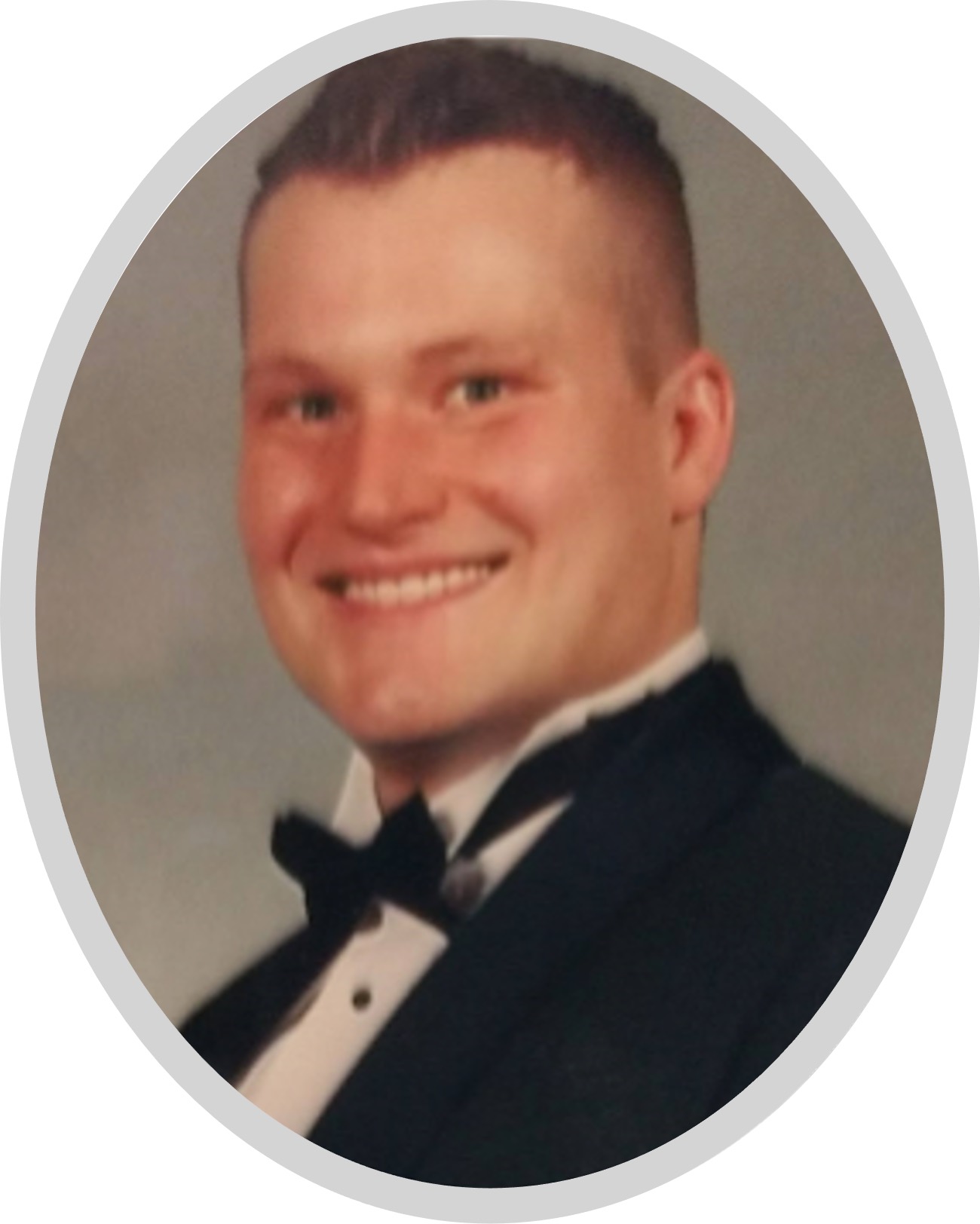
by Captain Alex Gasser (Royal Military College of Canada)
This thesis examines the reliability of the Fully Automated TiRiFiC (FAT) kinematic modelling algorithm in recovering rotation curves of marginally resolved warped galaxies. Early statistical studies indicate that roughly 50-70% of spiral galaxies contain visible warps. As the WALLABY survey is expected to significantly increase the number of catalogued HI galaxies, many of which are likely to be less than 15 beams across in spatial resolution and thus warped, it becomes crucial to test modelling tools used by such large surveys under such conditions.
The impacts of fitting flat-disk models to intrinsically warped galaxies are determined. First, mock observations of flat-disk galaxies are created to determine the minimum spatial resolution, HI mass, and inclination required for FAT to accurately recover rotation curves. FAT proves effective in recovering rotation curves for flat-disk galaxies with HI mass greater than 0.1 billion solar masses, given an inclination of more than 65 degrees for galaxies larger than 2 beams across or more than 50 degrees for galaxies larger than 5 beams across. Next, 500 WALLABY-like observations of warped galaxies are generated and fitted with models using FAT. FAT successfully determines rotation curves for these mock galaxies, yielding similar parametric values as for flat-disk galaxies. However, FAT sometimes fails to recognize the presence of a warp. Last, FAT is forced to fit flat-disk models to the warped mock galaxies. There is little difference in FAT’s ability to recover the rotation curves.
In conclusion, it is found acceptable to fit flat-disk models to warped galaxies detected with WALLABY and other widefield surveys with similar depth and resolution. These results are strictly valid for the symmetric warps in the idealized mock galaxies examined in this thesis.
Modelling Local Galaxy HI Disks with WALLABY Pilot Phase 2

by Rebecca Halloran (Queen’s University in Canada)
The reliability of kinematic geometric models in recovering the HI surface density profiles has not been studied before. This thesis investigates this reliability for the detections from WALLABY Pilot Phase 2 data (Phase 2 data).
Surface density profiles and HI radii were measured using a nested tilted ring modelling method on mock WALLABY observations to determine the regime in which these characteristics are reliably recovered. The kinematic modelling previously used for the WALLABY Public Data Release 1 (PDR1) was applied on the Phase 2 data. The results were then compared to quantify the modelling outcomes. The kinematic models for the Phase 2 data were used to construct the HI size-mass and the HI size-velocity scaling relations.
The HI size-mass relation exhibited a tight correlation, consistent with previous investigations. The HI size-velocity relation is one of the first for an untargeted HI survey. It highlights the potential of WALLABY in constraining the structure of HI disk populations.
The Incidence of Polar Ring Galaxies in WALLABY Pilot Fields

by 2nd Lieutenant Reanna Palleske (Royal Military College of Canada)
This thesis explores the detectability of polar ring galaxies, which are intriguing objects in the local Universe with two distinct HI components.
Using data from WALLABY’s pilot phase, we estimate the universal incidence of polar ring galaxies by combining HI detections with mock data cubes representing various observation conditions. Kinematic models of two polar ring galaxy candidates from WALLABY’s PDR1 were projected at different orientations and resolutions to constrain the incidence of these unique galaxies. Further investigation of the morphology and kinematics of detections since PDR1 revealed three potential polar ring galaxies with signs of these gaseous misalignments. This implies an overall incidence of approximately ∼1.5%, consistent with the estimate from PDR1 alone.
These findings suggest that gas-rich polar ring galaxies might be significantly more common in the local Universe than previously estimated.
TWG 4 – Source Finding & Cataloguing
by Tobias Westmeier on behalf of TWG 4
TWG4 has started extracting source catalogues from the first footprints of the full WALLABY survey. The aim is to make preliminary galaxy catalogues internally available to the team as quickly as possible while the survey is gradually increasing in sky coverage and depth. More than 900 HI detections have already been released to the team, and that number is expected to rise over the coming months as more WALLABY full survey footprints are successfully observed with ASKAP. An example of a SoFiA moment 0 map from one of the full WALLABY survey footprints is shown in Fig. 3.

As the current catalogues are still based on single footprints, there are a few caveats to bear in mind. To begin with, the integration time of 8 hours implies a somewhat lower sensitivity compared to the final 16-hour tiles. In addition, the lack of dithering means that the noise level will vary across each region due to the effect of primary-beam attenuation in addition to a general drop in sensitivity towards the edges and corners of each footprint. Despite these caveats, the preliminary catalogues might still be useful for certain science cases which do not require full sensitivity or precise characterisation of the selection effects.
TWG 5 – Kinematics Pipeline
by Kristine Spekkens and Nathan Deg
The beta version of the full WALLABY kinematic pipeline is available to test!
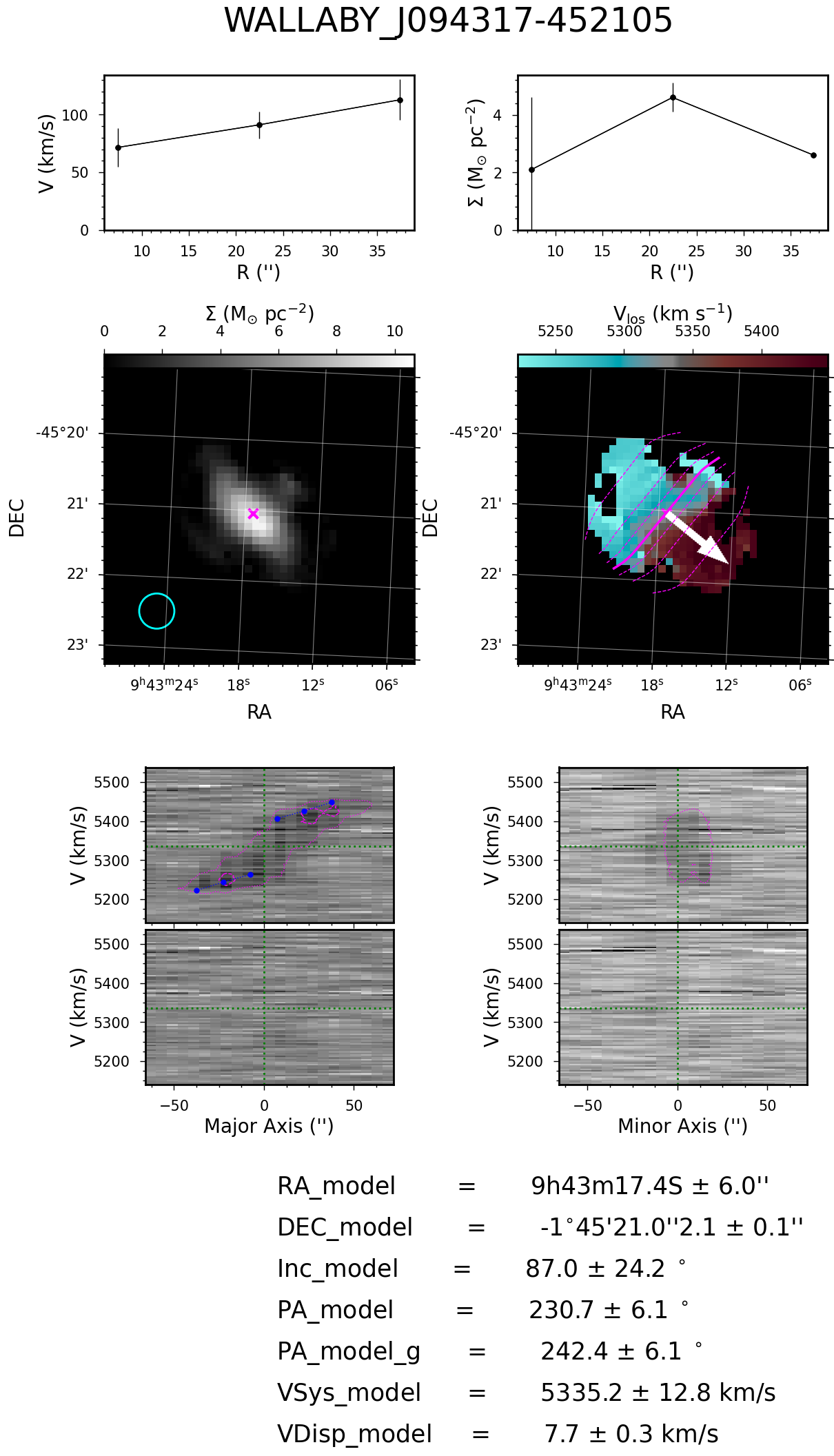
Key science goals of WALLABY require an automated kinematic pipeline that produces models with robust and statistically meaningful uncertainties. This pipeline must be tailored for low-resolution detections and low signal-to-noise (S/N) detections, as the majority of spatially-resolved WALLABY detections fall into this category. Homogeneous application of the pipeline to all detections is vital for a well-defined selection function.
Existing codes meet some, but not all, of these requirements. Most importantly, they fall short on uncertainty estimation. To address this limitation, significant progress has been made in the recent months in developing a custom 3D kinematic modeling pipeline for full WALLABY. This pipeline, tentatively named 3KIDNAS (3d Kinematic Data aNalysis Algorithm for Surveys; pronounced “echidnas”; thanks to J. Delhaize for the suggestion!), has undergone testing on a suite of idealized mock galaxies and is currently being applied to the Phase 1 and Phase 2 Pilot Survey data. Preliminary results indicate a higher model success rate and more representative uncertainties compared to the outcomes of the WALLABY Kinematic Analysis Proto-Pipeline (WKAPP).
A beta version of 3KIDNAS is available on GitHub, and feedback, comments, and code tests are warmly encouraged. Additionally, suggestions for diagnostic plots are most welcome; the current iteration of the plot is pictured in Fig. 4. The development of 3KIDNAS marks an exciting step forward in advancing research capabilities with WALLABY.
TWG 7 – WALLABY Archive
by Nathan Deg
The archive working group is actively preparing for the upcoming Public Data Release 2 (PDR2). Our current focus revolves around the data engineering of the normal resolution data for the CASDA and CADC archives. Additionally, we have initiated efforts to integrate the high-resolution cubelets produced by Chandra, along with associated kinematic models, into the release. Looking ahead, we will incorporate the outcomes from the full kinematic pipeline into the AusSRC database once the pipeline has been fully vetted.
Upcoming Meetings & Workshops
Mark your calendars for the annual WALLABY science meeting on October 19, 2023! This meeting is likely to be held in a hybrid full-day format, accommodating participants from different time zones worldwide. Please be aware that the regular monthly WALLABY science meetings for August and October have been canceled.
After a busy conference season, there are still some exciting science meetings ahead, with several scheduled for September and the year’s end. Notably, the ASTRO3D x AGATE Workshop titled “Galaxies at the Extremes” is eagerly looking forward to welcoming WALLABY members, especially those involved in dark clouds, dwarfs, or low surface brightness science. The workshop has extended its registration deadline to accommodate more participants. While some meetings have closed abstract deadlines, remote participation is still open and encouraged. Additionally, there are student workshops worth highlighting.
Make sure not to miss out on these fantastic opportunities!
| When | What | Where |
| 2023 Sept. 4-8 | Galaxy Transformation Across Space & Time | Canberra, Australia |
| 2023 Sept. 4-8 | Spectral Fidelity | Florence, Italy |
| 2023 Sept. 21 | Monthly WALLABY Science Meeting | Online |
| 2023 Sept. 25-29 | CSIRO S&A Radio Astronomy School | ATCA, Narrabri, NSW |
| 2023 Oct. 19 | Annual WALLABY Science Meeting | Hybrid format |
| 2023 Oct. 30 – Nov. 3 | East Asia SKA Workshop | Jeju Island, South Korea |
| 2023 Oct. 31 – Nov. 2 | ASTRO3D x AGATE Workshop: Galaxies at the Extremes | Melbourne, Australia |
| 2023 Nov. 8-10 | Mount Stromlo Student Seminars 2023 | Weston Creek, Australia |
| 2023 Nov. 27 – Dec. 1 | ASTRO3D Annual Retreat | Tangalooma Island Resort, Queensland |
| 2023 Dec. 11-15 | 9th Annual Science At Low Frequencies | Amsterdam, Netherlands |
| 2024 Feb. 5-9 | ANITA summer school and workshop | Melbourne, Australia |
WALLABY Publications
Feb – Aug 2023:
- Glowacki M., Lee-Waddell K., Deller A.T., Deg N., Gordon A.C., Grundy J.A., Marnoch L., et al., 2023, WALLABY Pilot Survey: H I in the Host Galaxy of a Fast Radio Burst, ApJ, 949, 25. doi:10.3847/1538-4357/acc1e3
- Holwerda B.W., Bigiel F., Bosma A., Courtois H.M., Deg N., Dénes H., Elagali A., et al., 2023, WALLABY Pilot Survey: hydra cluster galaxies UV and H I morphometrics, MNRAS, 521, 1502. doi:10.1093/mnras/stad602
- Grundy J.A., Wong O.I., Lee-Waddell K., Seymour N., For B.-Q., Murugeshan C., Koribalski B.S., et al., 2023, WALLABY pre-pilot survey: Radio continuum properties of the Eridanus supergroup, PASA, 40, e012. doi:10.1017/pasa.2023.11
- Reynolds T.N., Catinella B., Cortese L., Deg N., Dénes H., Elagali A., For B.-Q., et al., 2023, WALLABY Pilot Survey: The diversity of HI structural parameters in nearby galaxies, accepted for publication in PASA, doi:10.48550/arXiv.2306.04035
- Parra-Royon M., Shen A., Reynolds T., Venkataraman P., Mendoza M.A., Sánchez-Exposito S., Garrido J., et al., 2023, Asymmetric distribution of data products from WALLABY, an SKA precursor neutral hydrogen survey, doi:10.48550/arXiv.2303.11670
A complete list of WALLABY ADS libraries can be found at https://wallaby-survey.org/papers
